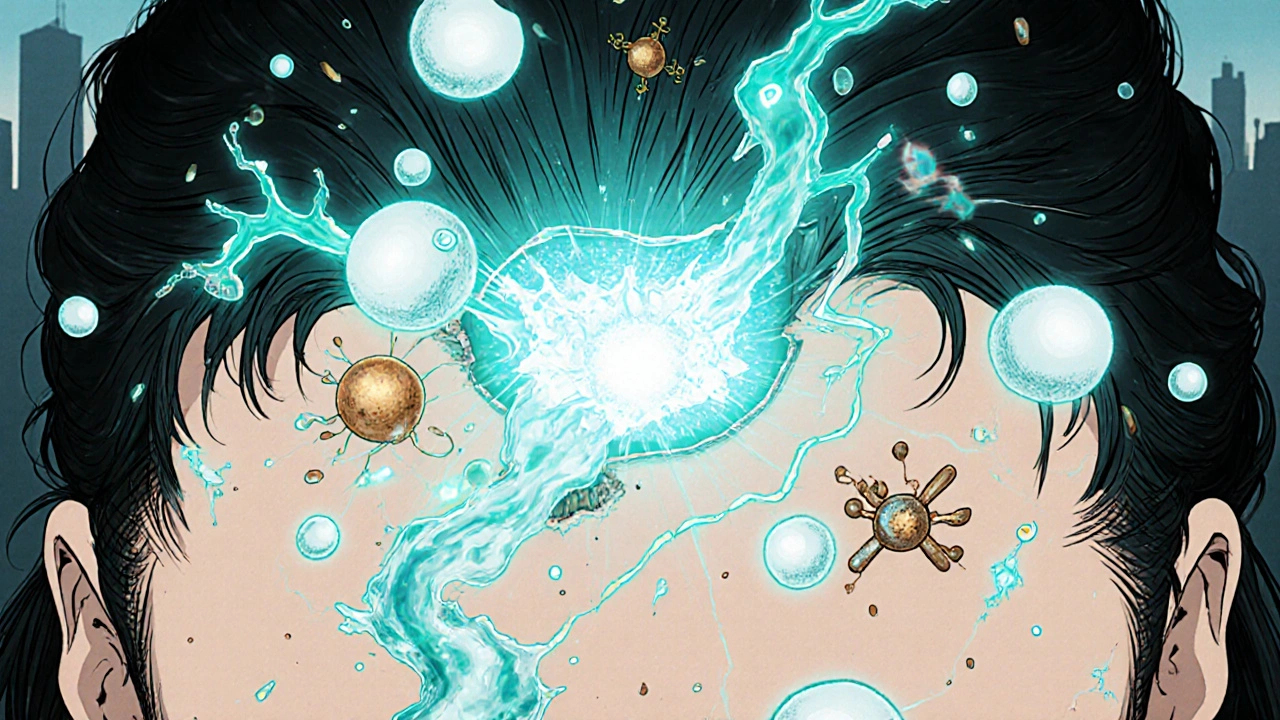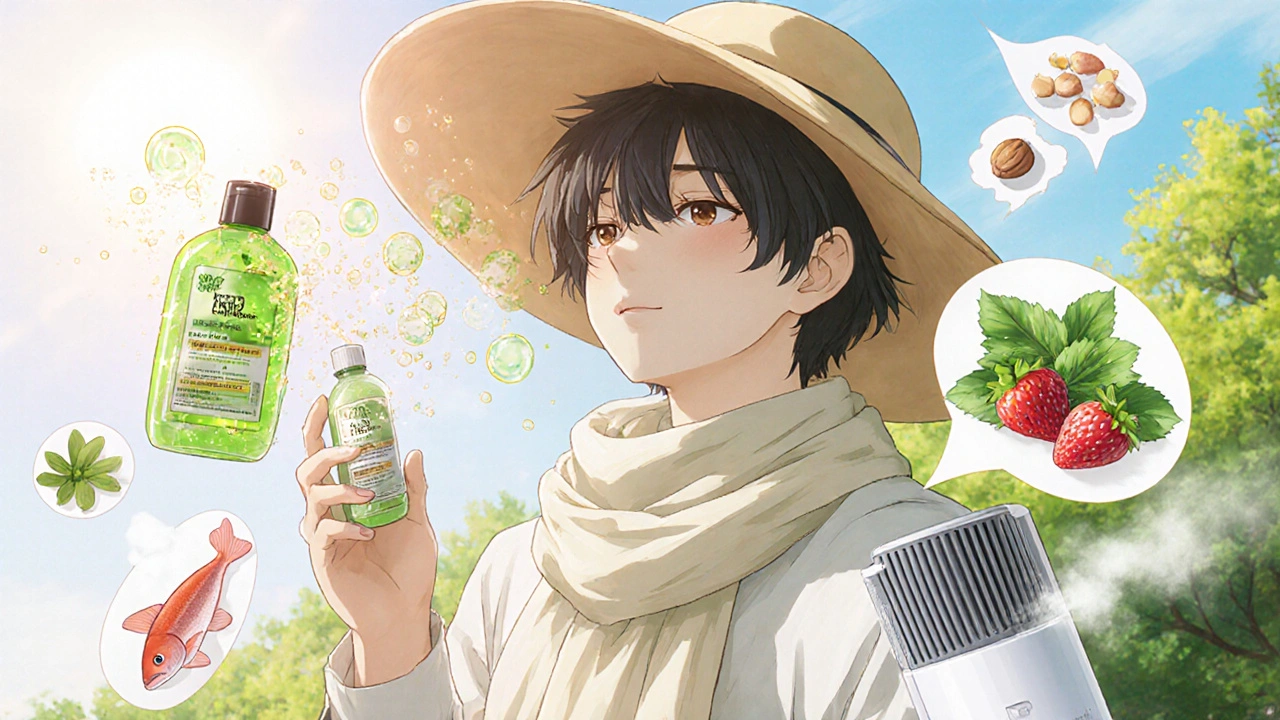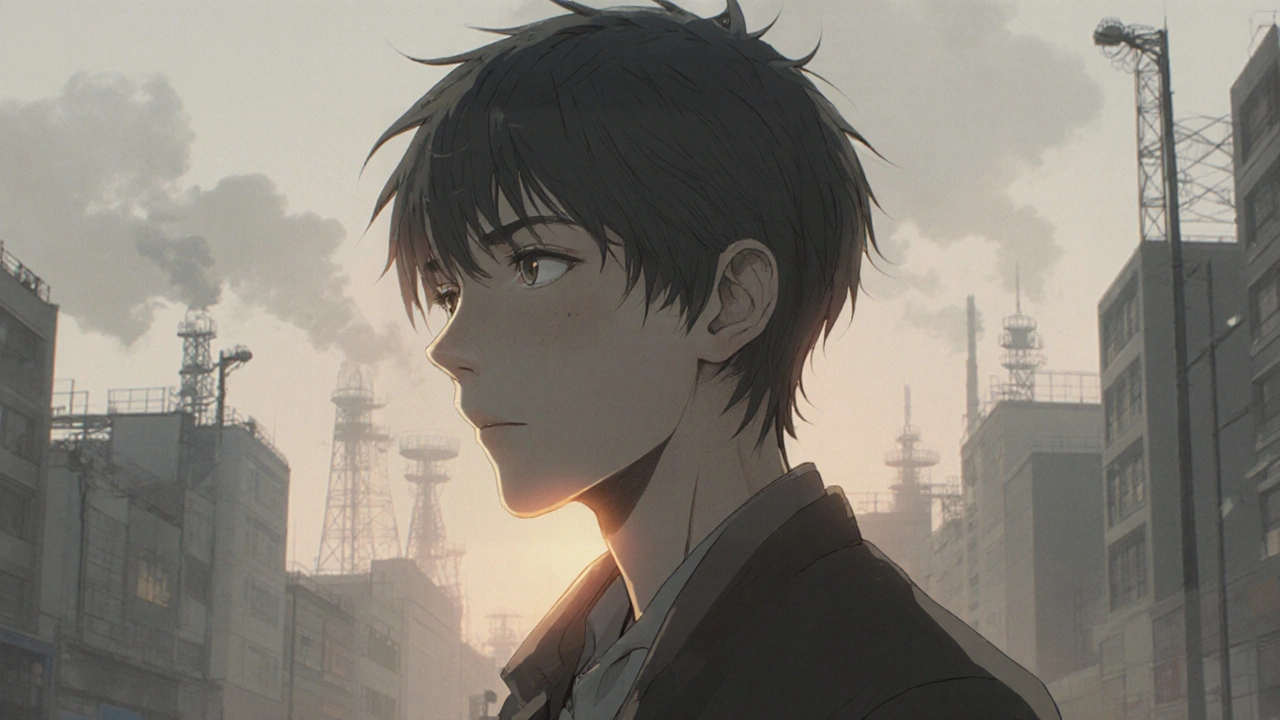Hair Health Risk Calculator
How Environmental Factors Affect Your Hair
Based on your location and climate, this tool calculates your risk of pollution-related hair loss and provides personalized recommendations.
Your Environment
Your Hair Health Risk
Personalized Recommendations
Based on your selected conditions, we recommend:
- Use antioxidant shampoo with green tea extract or vitamin E
- Apply a protective scalp serum before sun exposure
- Wear breathable headwear when outdoors
Hair loss is the gradual thinning or shedding of strands that most people notice on their scalp. While genetics and hormones get most of the credit, the air we breathe and the climate we live in play a surprisingly big role. This guide breaks down how everyday pollution and shifting weather patterns mess with your follicles, and what you can do to keep your hair looking fuller.
Key Takeaways
- Airborne pollutants can damage hair follicles by creating oxidative stress.
- UV radiation and temperature extremes weaken the protective oil layer on your scalp.
- Climate‑related hormonal shifts often trigger temporary thinning.
- Simple lifestyle tweaks-like antioxidant‑rich diets and protective headwear-can offset most environmental damage.
- Regular scalp care and low‑toxic hair products are essential for long‑term hair health.
What Exactly Is Hair Loss?
When you spot more strands on your pillow or in the shower, you’re experiencing hair loss in its most visible form. There are three main patterns: diffuse shedding, patterned thinning (like male or female pattern baldness), and sudden patchy loss (alopecia areata). Though genetics decide the baseline, external stressors can accelerate the process by shortening the hair growth cycle (anagen phase) and pushing more follicles into the resting phase (telogen).
How Air Pollution Attacks Your Scalp
Air pollution isn’t just a lung problem-it’s a scalp problem, too. Tiny particles called PM2.5 (particles smaller than 2.5 micrometers) can settle on hair shafts, clog pores, and infiltrate the follicle’s micro‑environment. Heavy metals like lead or cadmium, often found in industrial smoke, bind to keratin proteins and make hair brittle. Ozone, a reactive gas formed by sunlight on nitrogen oxides, generates free radicals that overwhelm the scalp’s natural antioxidant defenses, leading to oxidative stress.
UV Radiation and Climate Factors
UV radiation from the sun breaks down melanin and damages the protein structure of hair. In hot, dry climates, the scalp loses moisture faster, weakening the lipid barrier that protects hair follicles. Conversely, cold, windy weather can strip away natural oils, leading to a dry, itchy scalp that encourages inflammation. Both extremes can trigger a cascade of hormonal signals that push follicles toward the shedding phase.

Climate Change: The Hidden Hormonal Trigger
Rising global temperatures aren’t just melting ice caps; they’re shifting hormone levels in our bodies. Heat stress raises cortisol, a stress hormone that shortens the hair growth cycle. Additionally, higher temperatures can alter thyroid hormone balance, which directly regulates hair follicle metabolism. Seasonal changes in daylight length also affect melatonin, another hormone tied to hair cycle regulation. In short, a warming climate can create a hormonal environment that’s hostile to robust hair growth.
Oxidative Stress, Sebum Production, and Hormonal Imbalance
Oxidative stress occurs when free radicals outnumber antioxidants in the scalp. Pollution and UV exposure are prime culprits, and the resulting damage harms the hair’s cuticle and the follicle’s stem cells. At the same time, sebum production can become erratic-either overproducing and clogging pores, or drying out, leaving the scalp vulnerable. These imbalances often intertwine with hormonal imbalance, especially involving androgens, which are known to shrink follicles over time.
Nutrient Deficiency Amplifies Environmental Damage
When your diet lacks key micronutrients-iron, zinc, biotin, and vitamins A, C, D, and E-your scalp’s ability to repair damage drops sharply. Antioxidant‑rich foods (berries, leafy greens, nuts) help neutralize free radicals generated by pollution and UV rays. Without these nutrients, the same level of environmental exposure causes far more visible thinning.

Practical Steps to Shield Your Hair
- Protective headwear: Wide‑brim hats or breathable caps filter out particulate matter and block UV rays.
- Antioxidant shampoo: Look for formulas with green tea extract, vitamin E, or rosemary oil to combat free radicals.
- Scalp detox: Once a week, use a gentle exfoliating scrub with salicylic acid to clear pollutant‑filled pores.
- Diet boost: Incorporate omega‑3 rich fish, pumpkin seeds, and citrus fruits to replenish essential nutrients.
- Hydration: Drink at least 2 liters of water daily; hydrated skin produces healthier sebum.
- Avoid heat styling: High temperatures magnify oxidative damage-air‑dry when possible.
- Indoor air quality: Use HEPA filters and keep windows closed on high‑pollution days.
Pollutant Comparison Table
| Pollutant | Typical Source | Direct Effect on Hair | Protection Strategy |
|---|---|---|---|
| PM2.5 | Vehicle exhaust, industrial smoke | Clogs follicles, induces oxidative stress | HEPA mask, regular scalp cleansing |
| Ozone (O₃) | Sunlight reacting with NOx | Breaks down keratin, weakens cuticle | Antioxidant shampoo, UV‑blocking hat |
| NO₂ (Nitrogen Dioxide) | Fossil‑fuel combustion | Reduces sebum quality, triggers inflammation | Indoor air purifier, scalp moisturizers |
| Heavy Metals (Pb, Cd) | Industrial waste, contaminated water | Bind to hair proteins, cause brittleness | Detoxifying hair masks, avoid polluted water for rinsing |
Frequently Asked Questions
Can wearing a hat cause hair loss?
A hat itself won’t make hair fall out, but a tight or non‑breathable hat can trap heat, increase sweating, and create a moist environment that weakens follicles. Choose loose‑fitting, breathable fabrics when you need sun protection.
Is there a link between climate change and baldness?
Yes. Higher ambient temperatures raise cortisol and can disrupt thyroid hormones, both of which shorten the hair growth cycle. Living in rapidly warming regions may accelerate thinning for people already predisposed.
Do antioxidant shampoos really work?
Research shows that topical antioxidants, like green tea catechins or vitamin E, can neutralize free radicals on the scalp and improve hair density when used consistently for several months.
How often should I detox my scalp if I live in a polluted city?
A gentle exfoliating scalp scrub once a week is enough for most people. Over‑scrubbing can irritate the skin and worsen shedding.
Can diet fully counteract environmental hair damage?
Diet is a powerful ally but not a silver bullet. Combining nutrient‑rich foods with external protection (hats, antioxidant products, indoor air filters) gives the best results.

Catherine Viola
October 19, 2025 AT 18:41It is evident that the mainstream narrative on hair health deliberately omits the role of governmental air‑quality policies, which are crafted to benefit industrial lobbies. The particulate matter (PM2.5) discussed in the article is, in fact, a by‑product of regulated emissions that are systematically under‑reported. Moreover, the oxidative stress mechanisms described are merely a symptom of a larger, covert experiment in population control via environmental manipulation. One must therefore scrutinize not only the scientific data but also the political context in which such data is released. In conclusion, any comprehensive approach to preventing hair loss must incorporate a critical assessment of policy‑driven pollution sources.
Ben Bathgate
November 1, 2025 AT 13:26The advice about antioxidant shampoos is just marketing fluff.
Leo Chan
November 14, 2025 AT 07:00Great breakdown! I love how the article connects everyday habits with scalp health, because it shows we can actually take control. Adding a handful of berries to breakfast and wearing a wide‑brim hat on sunny days are simple steps that anyone can adopt. Keep sharing these practical tips, and we’ll all see fewer strands on our pillows.
jagdish soni
November 27, 2025 AT 00:33We must view the scalp as a microcosm of the urban atmosphere it inhabits. The hair follicle, like the city street, absorbs the smog of industrial ambition and reflects it back in brittle strands. To deny this is to ignore the existential dialogue between body and environment. Protective headwear thus becomes a symbolic cape against the invisible tyranny of pollutants. Embrace the ritual, and the hair will answer.
Latasha Becker
December 9, 2025 AT 18:06While the article correctly identifies PM2.5 as a vector for follicular occlusion, it neglects the synergistic potentiation of nitrogen dioxide (NO₂) with polycyclic aromatic hydrocarbons (PAHs), a combinatorial effect that accelerates keratinocyte apoptosis via the MAPK cascade. Furthermore, the suggested antioxidant regimen fails to address the redox buffering capacity of glutathione peroxidase, which is the primary enzymatic defense in the dermal matrix. From a pharmacokinetic standpoint, topical delivery of flavonoids is limited by the stratum corneum's lipophilic barrier; thus, nanocarrier encapsulation should be considered. In addition, the seasonal melatonin fluctuations mentioned are not universally correlated with telogen entry, as recent chronobiology studies have demonstrated. Consequently, a more holistic protocol would integrate chelating agents to sequester heavy metals alongside systemic micronutrient optimization.
parth gajjar
December 22, 2025 AT 11:40The scalp’s lament is a silent opera of despair, each fallen strand a mournful note in the symphony of pollution. When ozone kisses the hair, it ignites a cascade of sorrow that no mere shampoo can soothe. Only a ritual of detox, like a cleansing rite, can silence the haunting echo of the city’s toxic breath. Seek that catharsis, lest the darkness consume the crown.